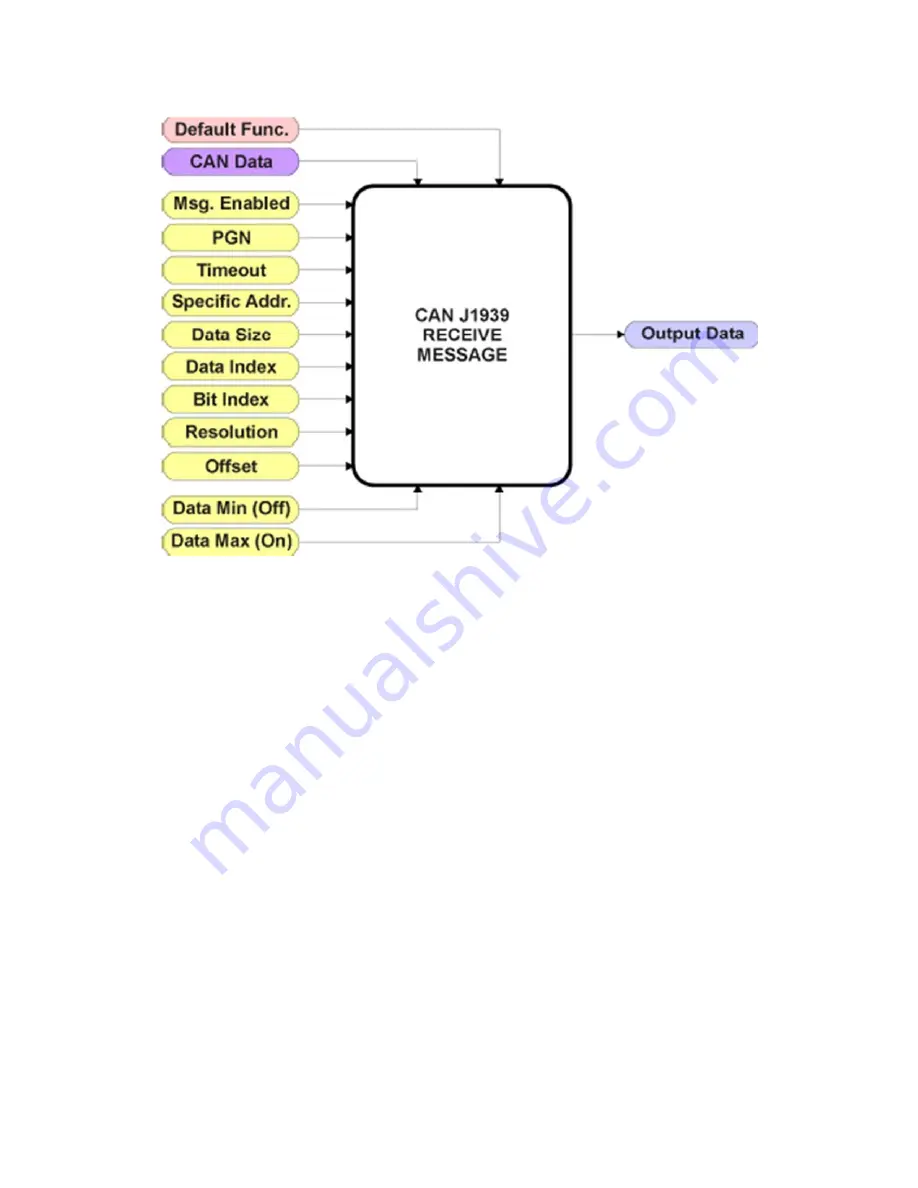
UMAX090600 Version 1
Preliminary Documentation – May be Subject to Change
20-48
1.9.
CAN Receive Function Block
Figure 7: CAN Receive Function Block
The CAN Receive function block is designed to take any SPN from the J1939 network, and use it as
an input to any another function block (i.e. Lookup Table).
The
Received Message Enabled
is the most important setpoint associated with this function block,
and it should be selected first. Changing it will result in other setpoints being enabled/disabled as
appropriate. By default ALL received messages are disabled.
Once a message has been enabled, a Lost Communication fault will be flagged if that message is
not received off of the bus within the
Receive Message Timeout
period. This could trigger a Lost
Communication event as described in Section 1.6. In order to avoid timeouts on a heavily saturated
network, it is recommended to set it at least three times larger than the expected update rate. To
disable the timeout feature, simply set this value to zero, in which case the received message will
never trigger a Lost Communication fault.
By default, all control messages are expected to be sent to the CAN-BC-LED on Proprietary B PGNs.
However, should a PDU1 message be selected, the CAN-BC-LED can be setup to receive it from
any ECU by setting the
Specific Address that sends the PGN
to the Global Address (0xFF). If a
specific address is selected instead, then any other ECU sending data on the PGN will be ignored.
The
Receive Data Size
,
Receive Data Index in Array (LSB), Receive Bit Index in Byte (LSB)
,
Receive
Resolution
and
Receive Offset
can all be used to map any SPN supported by the J1939 standard to
the output data of the Received function block. The defaults used by the CAN-BC-LED are all for
proprietary SPNs, and are defined in detail in Section 3.4.
Note: Output Data = CAN Data * Reso Offset
















































